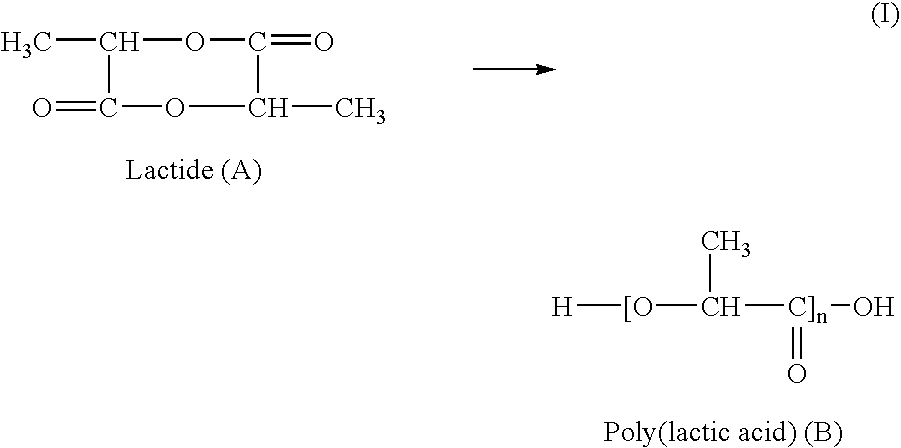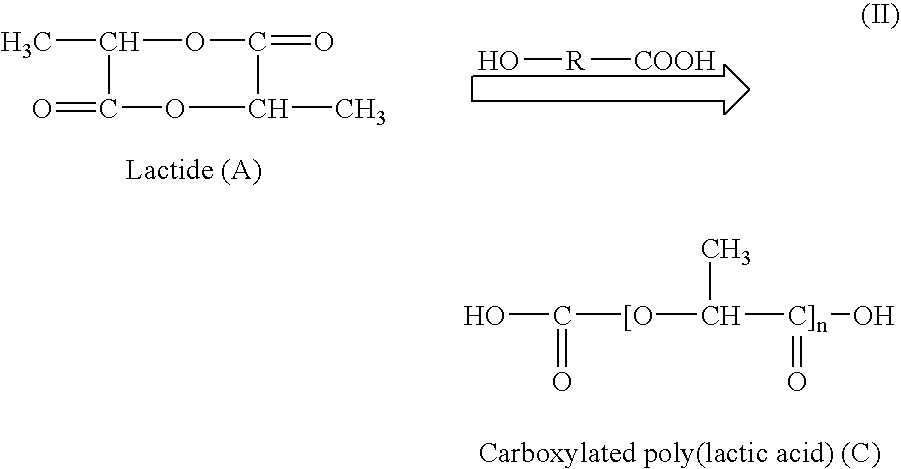Coatings for implantable devices comprising polymers of lactic acid and methods for fabricating the same
a technology of lactic acid and polymer, which is applied in the direction of prosthesis, catheter, food packaging, etc., can solve the problems of intimal flaps or torn arterial linings, affecting the patient's health, and affecting the patient's life, and causing adverse or toxic side effects
- Summary
- Abstract
- Description
- Claims
- Application Information
AI Technical Summary
Problems solved by technology
Method used
Image
Examples
example 1
[0083] A first composition can be prepared by mixing the following components: [0084] (a) between about 1.0 mass % and about 15 mass %, for example, about 2.0 mass % poly(D,L-lactic acid) (DLPLA) having inherent viscosity of about 0.67 dl / cm3 at room temperature, and [0085] (b) the balance, a solvent blend comprising 1,1,2-trichloroethane (TCE) and chloroform having a mass ratio between TCE and chloroform of about 4:1.
[0086] The first composition can be applied onto the surface of a bare 12 mm VISION stent (available from Guidant Corporation) by spraying and dried to form a primer layer. A spray coater can be used having a 0.014 fan nozzle maintained at about 60° C. with a feed pressure of about 0.2 atm (about 3 psi) and an atomization pressure of about 1.3 atm (about 20 psi). The primer can be baked at about 120° C. for about 30 minutes, yielding a dry primer layer. The primer layer can contain about 100 μg DLPLA.
[0087] A second composition can be prepared by mixing the following...
example 2
[0095] A 12 mm VISION stent can be coated as described in Example 1. A composition can be prepared by mixing the following components: [0096] (a) between about 1.0 mass % and about 15 mass %, for example, about 2.0 mass % PEG-PBT having about 45 molar % PBT units and about 55 molar % PEG units. The molecular weight of the PEG units can be about 300 Daltons, and the molecular weight of the PBT blocks can be about 100,000 Daltons; and [0097] (b) the balance, the blend of TCE and chloroform described above.
[0098] The composition can be applied onto the dried stent coating with which the stent had been coated to form the finishing coat layer, using the same spraying technique and equipment used for applying the primer layer, followed by drying, e.g., by baking at about 50° C. for about 1 hour, yielding a dry finishing coat layer. The dry finishing coat layer can contain about 150 μg PEG-PBT.
example 3
[0099] The stent can be coated with a primer layer as described in Example 1. A first composition can be prepared by mixing the following components: [0100] (a) between about 0.05 mass % and about 3.0 mass %, for example, about 0.7 mass % EVEROLIMUS; [0101] (b) between about 1.0 mass % and about 15 mass %, for example, about 2.1 mass % DLPLA having inherent viscosity of about 0.67 dl / cm3 at room temperature, and [0102] (c) the balance, the blend of TCE and chloroform described above.
[0103] The mass ratio between EVEROLIMUS and DLPLA can be about 1:3. The first composition can be applied onto the dried primer layer to form the reservoir layer, using the same spraying technique and equipment used for applying the primer layer, followed by drying, e.g., by baking at about 50° C. for about 1 hour, yielding a dry reservoir layer. The dry reservoir layer can contain about 75 μg EVEROLIMUS and about 225 μg DLPLA.
[0104] A second composition can be prepared by mixing the following componen...
PUM
| Property | Measurement | Unit |
|---|---|---|
| Biocompatibility | aaaaa | aaaaa |
| Bioabsorbable | aaaaa | aaaaa |
Abstract
Description
Claims
Application Information
 Login to View More
Login to View More - R&D
- Intellectual Property
- Life Sciences
- Materials
- Tech Scout
- Unparalleled Data Quality
- Higher Quality Content
- 60% Fewer Hallucinations
Browse by: Latest US Patents, China's latest patents, Technical Efficacy Thesaurus, Application Domain, Technology Topic, Popular Technical Reports.
© 2025 PatSnap. All rights reserved.Legal|Privacy policy|Modern Slavery Act Transparency Statement|Sitemap|About US| Contact US: help@patsnap.com



